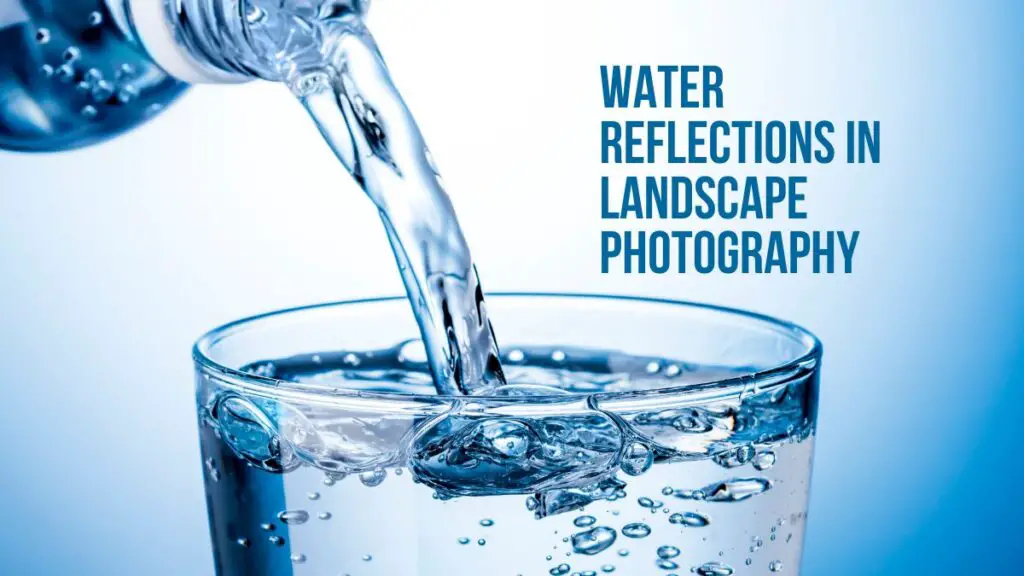When it comes to capturing the serenity and beauty of nature, there is a technique in photography that can genuinely create stunning and captivating images – water reflections. Water reflections in landscape photography have a unique allure and significance that can transform an ordinary scene into something extraordinary.
How water reflects light and mirrors the surroundings can add depth, texture, and a sense of tranquility to your photographs. In this article, I will guide you through the world of water reflections in landscape photography, providing tips, techniques, and inspiration to help you capture the beauty of this mesmerizing phenomenon.
The allure and significance of water reflections
Water reflections have fascinated artists and photographers throughout history. They hold a special place in our hearts and minds because they evoke a sense of calm and peacefulness. The way water reflects the world around it can create a surreal and dreamlike quality in an image.
It visually represents the harmony between land and water, light and shadow. Water reflections can also add a dynamic element to your photographs, creating exciting patterns and symmetries that draw the viewer’s eye.
Tips for capturing stunning water reflections
There are a few essential tips for capturing stunning water reflections in landscape photography. Firstly, choose the right time of day. The best time to capture water reflections is during the golden hour, the hour after sunrise, or before sunset when the light is soft and warm.
This is when the colors are most vibrant, and the reflections are at their most alluring—secondly, scout for locations with calm and still water. A lake, pond, or puddle can provide the perfect reflective surface.
Avoid windy days, as ripples on the water’s surface can distort the reflections. Lastly, experiment with different angles and perspectives. Get low or use a tripod to capture a unique viewpoint. Play with the composition and framing to create a visually pleasing image.
Choosing the right location for water reflection photography
When choosing the right location for water reflection photography, there are a few factors to consider. Firstly, look for areas with exciting and photogenic landscapes. A beautiful mountain range, a dense forest, or a picturesque cityscape can provide a stunning backdrop for your reflections. Secondly, consider the surrounding environment.
Avoid locations with excessive clutter or distractions that can diminish the overall impact of the reflection. Lastly, consider the weather conditions. Clear skies and calm waters are ideal for capturing crisp and clear reflections.
Equipment and camera settings for water reflection photography
You will need the right equipment and camera settings to capture the beauty of water reflections in landscape photography. Firstly, invest in a good-quality DSLR or mirrorless camera with a wide-angle lens. A wide-angle lens will allow you to capture the expansive landscape and include the reflection in your frame. Secondly, use a tripod to keep your camera steady and minimize blur.
This is especially important when shooting during low light conditions. Lastly, adjust your camera settings accordingly. Use a low ISO to reduce noise, a small aperture (high f-stop number) to ensure a considerable depth of field, and a slower shutter speed to capture the motion of the water.
Composition and framing techniques for water reflection photography
Composition and framing are crucial elements in water reflection photography. To create visually pleasing images, consider the following methods. Firstly, use the rule of thirds. Divide your frame into a grid of nine equal sections and place the horizon or main subject along one of the horizontal lines.

This will create a sense of balance and harmony. Secondly, different reflections and their positioning within the frame should be experimented with. Including both the reflection and the subject can develop a sense of depth and interest. Lastly, pay attention to leading lines and symmetry. Incorporate elements like a bridge, a pathway, or a row of trees to guide the viewer’s eye and create a harmonious composition.
Editing and post-processing water reflection images
Editing and post-processing play a crucial role in enhancing the beauty of water-reflection images. First, adjust the exposure. Ensure the highlights are not blown out, and the shadows have enough detail. Second, enhance the colors by adjusting the saturation and vibrance.
Experiment with the white balance to achieve the desired mood and tone. Lastly, sharpen the image and apply selective adjustments to enhance specific areas, such as the reflection or the foreground. Keep in mind that post-processing should enhance the image, not drastically alter it.
Famous examples of water reflection photography
Throughout history, there have been several iconic examples of water reflection photography that have captured the imagination of viewers around the world. Ansel Adams, renowned for his black-and-white landscape photography, created stunning images of reflections in lakes and ponds.
His use of contrast and tonal range created a sense of depth and drama in his photographs. Another famous example is David Muench, who captured the beauty of water reflections in his vibrant and colorful images. His compositions and use of light created a sense of tranquility and serenity.
Inspiring water reflection photography ideas
If you want inspiration for your water reflection photography, here are a few ideas to get you started. Firstly, experiment with abstract reflections. Look for interesting patterns and shapes to create a unique and artistic image.
Secondly, play with long exposures to capture the movement of the water and create a sense of motion. This can add a dynamic and ethereal quality to your photographs. Lastly, try incorporating human elements into your reflections. A person walking along the shore or a boat floating on the water can add a sense of scale and storytelling to your images.
Conclusion
Water reflections in landscape photography are a captivating and beautiful subject to explore. They can transform an ordinary scene into something extraordinary, evoking a sense of calm and serenity.
By following the tips, techniques, and inspiration provided in this article, you can capture stunning water reflection images that will mesmerize viewers and showcase the beauty of nature. So grab your camera, head out to the nearest body of water, and start capturing the serenity of water reflections in your landscape photography.

